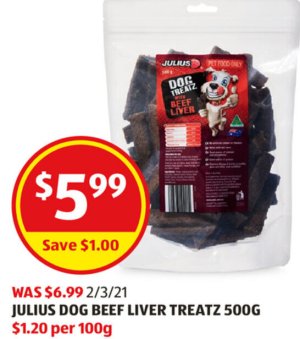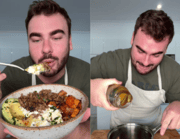Are you getting less but paying more? Check out these worrying examples of shrinkflation and inflation in grocery stores
By
- Replies 17
If you're a savvy grocery shopper, chances are you know how to spot a good deal when you see one. You know which supermarket has the best prices for certain items, and you're always on the lookout for special offers and promotions.
But lately, it seems like no matter how hard we try to save money on groceries, the cost of living is just getting higher and higher. In fact, there's even a term for this phenomenon: shrinkflation.
Shrinkflation refers to a situation in which manufacturers reduce the size or quantity of a product without reducing the price.
Something similar must have happened to our favourite foods, which seem to have become smaller in recent days…
Shrinkflation has been a problem all over the world as manufacturers seek to reduce expenses while maintaining a profit. But this doesn't make it any less discouraging to discover that our grocery bills are increasing while the actual food we're buying becomes smaller and smaller.

In a recent Reddit thread, Aussie social media users shared the worst examples of shrinkflation and inflation that they have observed in their local grocery stores.
One user said that they used to be a fan of Pringles until the company 'decided to make a smaller size for the same price'.
They then compared the price and size of Pringles as well as their competitor brands in ALDI. He claimed that the latter is more reasonable in both aspects, commenting: 'Since when do we pay $5 for a tube of half-sized pringles while the ALDI version is cheaper and filled to the brim?'
Meanwhile, another person shared how it feels like these days that an 'affordable' family dinner to them already requires the price of 'fine dining' (this however depends on what part of Australia one lives in).
Apparently, $60 is how much he needs to spend just to buy a piece of fish and chips for his whole family.
'I paid $60 for a piece of fish each and chips for our family. It’s sad but true that I can feed my whole family for 1/3 of the cost with Domino's pizza,' they wrote.

Elsewhere on the thread, a user shared how he paid $11 for a box of cereal, noting that it used to be sold for $9.
'Very expensive now,' he said.
Several others advised the commenter to avoid buying such food products because of the 'inflation' and rather opt for whole oats instead to make oats and eggs for a cheaper, healthier breakfast.
Another user wrote that their expenses for Pepsi jumped from $2 to $2.8 in a span of a year.
'I'll be back to drinking tap water,' this person joked.
One user also commented on the rising cost of dairy products, saying that they paid $9 for a bag of shredded cheese recently.
'I will be grating my own cheese in the future,' they said.
Another user has a similar experience with grated cheese, sharing: 'I buy shredded cheese in bulk and it’s jumped from $11 to $15 a kilo and that’s if I can find that deal, it's much more expensive if not on sale.'

As you can see, it seems as if there’s no point in trying to spot good deals as these days, it's just a 'roll of the dice' as to how much groceries will cost us. Not great, eh?
What are your thoughts on this? Better yet, have you also observed the same thing happening with your grocery shopping? Share your experiences with us in the comments below!
But lately, it seems like no matter how hard we try to save money on groceries, the cost of living is just getting higher and higher. In fact, there's even a term for this phenomenon: shrinkflation.
Shrinkflation refers to a situation in which manufacturers reduce the size or quantity of a product without reducing the price.
Something similar must have happened to our favourite foods, which seem to have become smaller in recent days…
Shrinkflation has been a problem all over the world as manufacturers seek to reduce expenses while maintaining a profit. But this doesn't make it any less discouraging to discover that our grocery bills are increasing while the actual food we're buying becomes smaller and smaller.

Many shoppers took notice of how they're paying more for fewer items during their grocery shopping. Credit: Pexels/Erik Scheel.
In a recent Reddit thread, Aussie social media users shared the worst examples of shrinkflation and inflation that they have observed in their local grocery stores.
One user said that they used to be a fan of Pringles until the company 'decided to make a smaller size for the same price'.
They then compared the price and size of Pringles as well as their competitor brands in ALDI. He claimed that the latter is more reasonable in both aspects, commenting: 'Since when do we pay $5 for a tube of half-sized pringles while the ALDI version is cheaper and filled to the brim?'
Meanwhile, another person shared how it feels like these days that an 'affordable' family dinner to them already requires the price of 'fine dining' (this however depends on what part of Australia one lives in).
Apparently, $60 is how much he needs to spend just to buy a piece of fish and chips for his whole family.
'I paid $60 for a piece of fish each and chips for our family. It’s sad but true that I can feed my whole family for 1/3 of the cost with Domino's pizza,' they wrote.

Fish and chips used to be a budget-friendly snack for most Aussies. Credit: Pexels/Gustav Lundborg.
Elsewhere on the thread, a user shared how he paid $11 for a box of cereal, noting that it used to be sold for $9.
'Very expensive now,' he said.
Several others advised the commenter to avoid buying such food products because of the 'inflation' and rather opt for whole oats instead to make oats and eggs for a cheaper, healthier breakfast.
Another user wrote that their expenses for Pepsi jumped from $2 to $2.8 in a span of a year.
'I'll be back to drinking tap water,' this person joked.
One user also commented on the rising cost of dairy products, saying that they paid $9 for a bag of shredded cheese recently.
'I will be grating my own cheese in the future,' they said.
Another user has a similar experience with grated cheese, sharing: 'I buy shredded cheese in bulk and it’s jumped from $11 to $15 a kilo and that’s if I can find that deal, it's much more expensive if not on sale.'
Key Takeaways
- Shrinkflation refers to a situation in which manufacturers reduce the size or quantity of a product without reducing the price.
- Examples of shrinkflation and inflation in grocery stores have been shared on a recent Reddit thread in which Aussie social media users discussed the rising cost of a variety of products.
- Popular items such as Pringles, cheese, cereal, and even soft drinks have been affected.
As you can see, it seems as if there’s no point in trying to spot good deals as these days, it's just a 'roll of the dice' as to how much groceries will cost us. Not great, eh?
What are your thoughts on this? Better yet, have you also observed the same thing happening with your grocery shopping? Share your experiences with us in the comments below!
Last edited by a moderator:








